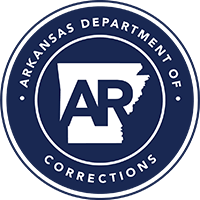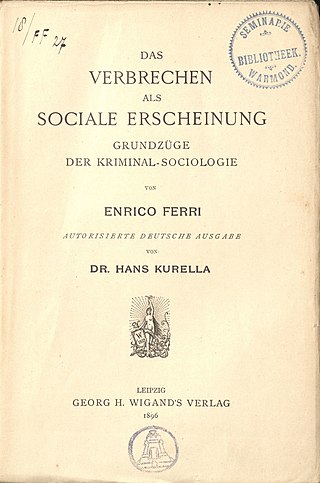The concept of a carceral archipelago was first used by the French historian and philosopher Michel Foucault in his 1975 publication, Surveiller et Punir, to describe the modern penal system of the 1970s, embodied by the well-known penal institution at Mettray in France. The phrase combines the adjective "carceral", which means that which is related to jail or prison, with archipelago—a group of islands. Foucault referred to the "island" units of the "archipelago" as a metaphor for the mechanisms, technologies, knowledge systems and networks related to a carceral continuum. The 1973 English publication of the book by Solzhenitsyn called The Gulag Archipelago referred to the forced labor camps and prisons that composed the sprawling carceral network of the Soviet Gulag.

A chain gang or road gang is a group of prisoners chained together to perform menial or physically challenging work as a form of punishment. Such punishment might include repairing buildings, building roads, or clearing land. The system was notably used in the convict era of Australia and in the Southern United States. By 1955 it had largely been phased out in the U.S., with Georgia among the last states to abandon the practice. Clallam County, Washington, U.S. still refers to its inmate litter crew as the "Chain Gang." North Carolina continued to use chain gangs into the 1970s. Chain gangs were reintroduced by a few states during the "get tough on crime" 1990s: In 1995, Alabama was the first state to revive them. The experiment ended after about one year in all states except Arizona, where in Maricopa County inmates can still volunteer for a chain gang to earn credit toward a high school diploma or avoid disciplinary lockdowns for rule infractions.

The Arkansas Department of Corrections (DOC), formerly the Arkansas Department of Correction, is the state law enforcement agency that oversees inmates and operates state prisons within the U.S. state of Arkansas. DOC consists of two divisions, the Arkansas Division of Corrections (ADC) and the Arkansas Division of Community Corrections (DCC), as well as the Arkansas Correctional School District. ADC is responsible for housing and rehabilitating people convicted of crimes by the courts of Arkansas. ADC maintains 20 prison facilities for inmates in 12 counties. DCC is responsible for adult parole and probation and offender reentry.

Discipline and Punish: The Birth of the Prison is a 1975 book by French philosopher Michel Foucault. It is an analysis of the social and theoretical mechanisms behind the changes that occurred in Western penal systems during the modern age based on historical documents from France. Foucault argues that prison did not become the principal form of punishment just because of the humanitarian concerns of reformists. He traces the cultural shifts that led to the predominance of prison via the body and power. Prison is used by the "disciplines" – new technological powers that can also be found, according to Foucault, in places such as schools, hospitals, and military barracks.
A prison gang is an inmate organization that operates within a prison system. It has a corporate entity and exists into perpetuity. Its membership is restrictive, mutually exclusive, and often requires a lifetime commitment. Prison officials and others in law enforcement use the euphemism "security threat group". The purpose of this name is to remove any recognition or publicity that the term "gang" would connote when referring to people who have an interest in undermining the system.
Alexander Maconochie was a Scottish naval officer, geographer and penal reformer.
A reformatory or reformatory school is a youth detention center or an adult correctional facility popular during the late 19th and early 20th centuries in Western countries. In the United Kingdom and United States, they came out of social concerns about cities, poverty, immigration, and gender following industrialization, as well as from a shift in penology to reforming instead of punishing the criminal. They were traditionally single-sex institutions that relied on education, vocational training, and removal from the city. Although their use declined throughout the 20th century, their impact can be seen in practices like the United States' continued implementation of parole and the indeterminate sentence.

Penal labour is a term for various kinds of forced labour that prisoners are required to perform, typically manual labour. The work may be light or hard, depending on the context. Forms of sentence involving penal labour have included involuntary servitude, penal servitude, and imprisonment with hard labour. The term may refer to several related scenarios: labour as a form of punishment, the prison system used as a means to secure labour, and labour as providing occupation for convicts. These scenarios can be applied to those imprisoned for political, religious, war, or other reasons as well as to criminal convicts.

A prison farm is a large correctional facility where penal labor convicts are forced to work — legally or illegally — on a farm, usually for manual labor, largely in the open air, such as in agriculture, logging, quarrying, and mining. In the United States, such forced labor is made legal by the thirteenth amendment to the Constitution; however, some other parts of the world have made penal labor illegal. The concepts of prison farm and labor camp overlap, with the idea that the prisoners are forced to work. The historical equivalent on a very large scale was called a penal colony.

Convict leasing was a system of forced penal labor that was practiced historically in the Southern United States before it was formally abolished during the 20th century. Under this system, private individuals and corporations could lease labor from the state in the form of prisoners, nearly all of which were black.

The Kentucky State Penitentiary (KSP), also known as the "Castle on the Cumberland", is a maximum security and supermax prison with capacity for 856 prisoners located in Eddyville, Kentucky on Lake Barkley on the Cumberland River, about 4.8 kilometres (3 mi) from downtown Eddyville. It is managed by the Kentucky Department of Corrections. Completed in 1886, it is Kentucky's oldest prison facility and the only commonwealth-owned facility with supermax units. The penitentiary houses Kentucky's male death row inmates and the commonwealth's execution facility. As of 2015, it had approximately 350 staff members and an annual operating budget of $20 million. In most cases, inmates are not sent directly to the penitentiary after sentencing but are sent there because of violent or disruptive behavior committed in other less secure correctional facilities in the commonwealth. This was Kentucky's second penitentiary: the first was made uninhabitable by a flood in 1937.

A prisoner is a person who is deprived of liberty against their will. This can be by confinement or captivity in a prison, or physical restraint. The term usually applies to one serving a sentence in prison.

Criminology is the interdisciplinary study of crime and deviant behaviour. Criminology is a multidisciplinary field in both the behavioural and social sciences, which draws primarily upon the research of sociologists, political scientists, economists, legal sociologists, psychologists, philosophers, psychiatrists, social workers, biologists, social anthropologists, scholars of law and jurisprudence, as well as the processes that define administration of justice and the criminal justice system.

Imprisonment began to replace other forms of criminal punishment in the United States just before the American Revolution, though penal incarceration efforts had been ongoing in England since as early as the 1500s, and prisons in the form of dungeons and various detention facilities had existed as early as the first sovereign states. In colonial times, courts and magistrates would impose punishments including fines, forced labor, public restraint, flogging, maiming, and death, with sheriffs detaining some defendants awaiting trial. The use of confinement as a punishment in itself was originally seen as a more humane alternative to capital and corporal punishment, especially among Quakers in Pennsylvania. Prison building efforts in the United States came in three major waves. The first began during the Jacksonian Era and led to the widespread use of imprisonment and rehabilitative labor as the primary penalty for most crimes in nearly all states by the time of the American Civil War. The second began after the Civil War and gained momentum during the Progressive Era, bringing a number of new mechanisms—such as parole, probation, and indeterminate sentencing—into the mainstream of American penal practice. Finally, since the early 1970s, the United States has engaged in a historically unprecedented expansion of its imprisonment systems at both the federal and state level. Since 1973, the number of incarcerated persons in the United States has increased five-fold. Now, about 2,200,000 people, or 3.2 percent of the adult population, are imprisoned in the United States, and about 7,000,000 are under supervision of some form in the correctional system, including parole and probation. Periods of prison construction and reform produced major changes in the structure of prison systems and their missions, the responsibilities of federal and state agencies for administering and supervising them, as well as the legal and political status of prisoners themselves.

The Kentucky State Penitentiary in Frankfort was an American prison. It was the first prison built west of the Allegheny Mountains and completed on June 22, 1800 when Kentucky was still virtually a wilderness. The Kentucky Legislature of 1798 had appointed Harry Innes, Alexander S. Bullitt, Caleb Wallace, Isaac Shelby and John Coburn as commissioners to choose a location for a “penitentiary house.” The house was described "to be built of brick, or stone, containing cells, workshops, with an outside wall high enough and strong enough to keep the prisoners from getting away." The site chosen was Frankfort, Kentucky. Henry Innis, one of the commission, gave one acre of land and the legislature appropriated $500 towards its building with more funds to be allocated later.

The Criminal is a book by Havelock Ellis published in 1890. A third revised and enlarged edition was subsequently published in 1901. The book is a comprehensive English summary of the main results of criminal anthropology, a field of study which was scarcely known at the time of the publication of the volume. The criminal is the first book published by the author and helped establish his reputation in the scientific world.

Das Verbrechen als soziale Erscheinung; Grundzüge der Kriminal-Sociologie was written by Enrico Ferri and originally published in 1884, but has undergone several revisions since then. It deals with Ferri's perspective on criminal sociology and problems of penology. The book is known as Ferri's most important work and represents the positive school of criminology.
George Peter Holford (1767–1839) was an English barrister, politician and author. With a short break 1806–7, he was a Tory Member of Parliament from 1803 to 1826, for a number of constituencies. Holford was an advocate of prison reform.

From Newgate to Dannemora: The Rise of the Penitentiary in New York, 1796–1848 is a book-length history chronicling the origins and early expansion of the penitentiary in New York state during the antebellum period. It was written by W. David Lewis and published in 1965 and reissued in 2009 by Cornell University Press.

The Rise of the Penitentiary: Prisons and Punishment in Early America is a history of the origins of the penitentiary in the United States, depicting its beginnings and expansion. It was written by Adam J. Hirsch and published by Yale University Press on June 24, 1992.














